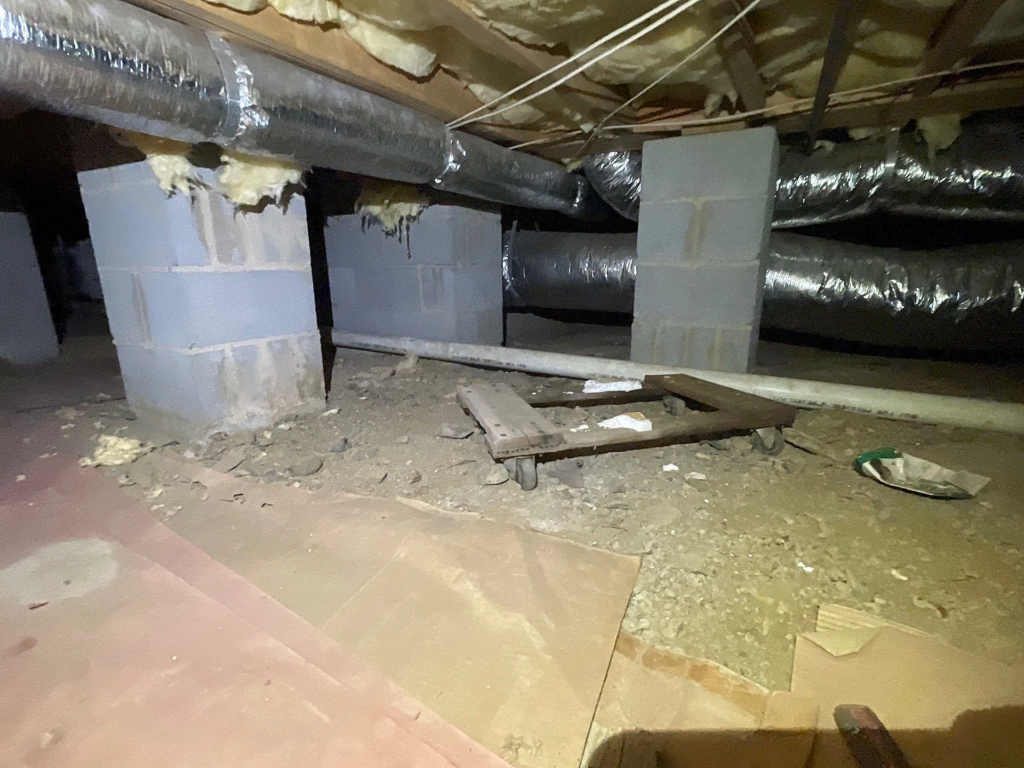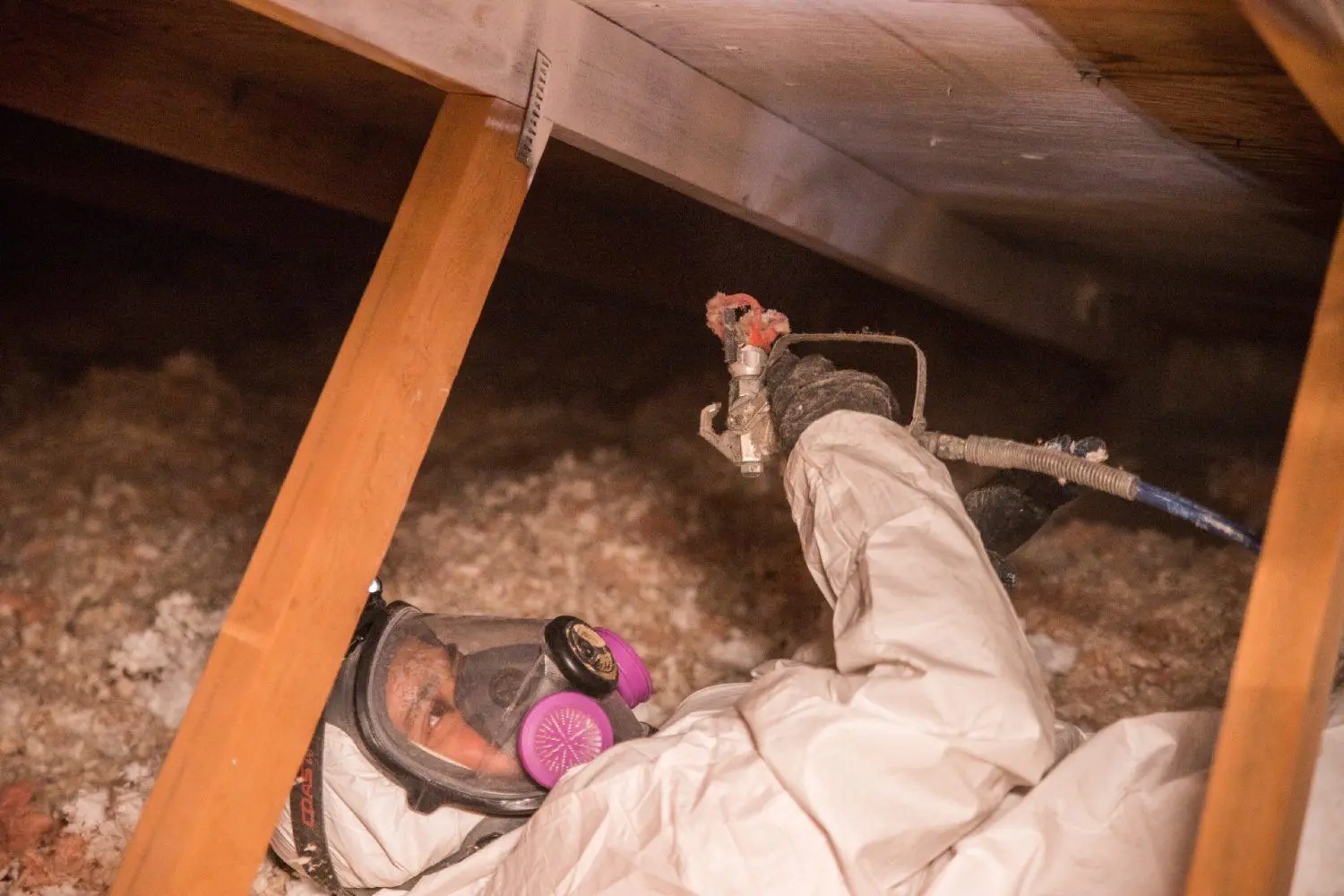At Walsh Crawlspace & Structural Repair, we hear it every year:
“Winter’s over—why is my crawlspace still a mess?”
Spoiler alert: Spring moisture, mold, and pest issues are real, and they don’t wait around. Let’s break down why the NC spring crawlspace season is so risky, and what you can do to protect your home from damage before it starts.
In North Carolina, spring is famous for:
Unfortunately, these are the perfect storm for crawlspace issues. And homes with unsealed, unprotected crawlspaces? They’ll feel the effects first.
NC soil doesn’t drain well in spring, so water can rise and sit beneath your home. If your crawlspace isn’t sealed or graded properly, it could already be collecting water.
Warm temps + high humidity = the ideal mold environment.
Without a dehumidifier or vapor barrier, spring mold spreads fast in NC crawlspaces—and spores won’t stay below the floor.
Rodents, termites, ants, and spiders start swarming and nesting in spring. And they love wet wood, insulation, and open vents in your crawlspace.
Rain causes soil movement. If water starts to erode the dirt supporting your foundation, your crawlspace—and entire structure—can begin to settle or crack.
Here’s how to fight back and stay protected:
It’s the easiest way to see what’s hiding under your home. Spring is the perfect time to catch problems early.
Schedule your FREE crawlspace inspection
A 12 mil reinforced vapor barrier seals moisture out and keeps your crawlspace dry all season.
Learn about our vapor barrier options
We design crawlspace drainage systems for NC’s heavy spring rain—no more pooling, no more rot.
Explore our drainage solutions
Spring humidity doesn’t stand a chance against a fully encapsulated crawlspace.
See how encapsulation works
Most homeowners wait until summer or fall to handle crawlspace issues—but by then, the damage is done. Spring is ideal because:
We’ve helped thousands of NC homeowners handle spring crawlspace problems before they became home disasters. Our team serves Charlotte, Fort Mill, Rock Hill, Greensboro, and surrounding areas with expert-level care.
📞 704-302-7715
🌐 www.walshcrawlspace.com
🛠️ Your NC spring crawlspace deserves better. Let us help.
Installing the right vapor barrier crawlspace system is one of the smartest ways to protect your home from moisture, mold, and costly repairs
At Walsh Crawlspace & Structural Repair, we get this question all the time:
“What kind of vapor barrier should I get?”
Let’s break it down—thickness, material, and what you actually need to keep your crawlspace safe and dry.
A vapor barrier is a layer of moisture-resistant plastic installed along your crawlspace floor—and sometimes up the walls—to stop ground moisture from evaporating into your home.
Simple concept. But not so simple when it comes to quality.
Let’s talk materials. Here are the most common types you’ll see:
Vapor barriers are measured in mils (1 mil = 1/1000th of an inch).
Here’s how they stack up:
| Thickness | What It’s Good For | Pros | Cons |
|---|---|---|---|
| 6 mil | Temporary or DIY fixes | Low cost | Tears easily, doesn’t last |
| 10 mil | Light-use areas | Somewhat durable | Not strong enough for most crawlspaces |
| ✅ 12 mil | Professional-grade protection | Strong, reliable, affordable | None—it’s the sweet spot |
| 16-20 mil | High-traffic or specialty needs | Extremely tough | Higher cost, often unnecessary |
👉 At Walsh, our standard is 12 mil reinforced vapor barrier—and it’s more than enough for 99% of homes.
If the situation calls for it (like high water intrusion or access-heavy spaces), we also install up to 20 mil.
Too thin? It’ll rip, shift, and let moisture back in.
Too thick? You might be overpaying for protection you don’t actually need.
That’s why 12 mil is the goldilocks zone—just right for durability, cost, and peace of mind.
Here’s what to think about:
✅ Foot traffic – HVAC techs or plumbers crawling under your home? Reinforced 12 mil handles it.
✅ Moisture levels – Got standing water? You might need drainage + 16–20 mil.
✅ Longevity – Want something that lasts? Reinforced plastic is your friend.
✅ Budget – 12 mil gives you pro-grade protection without the premium price tag.
When you work with Walsh Crawlspace & Structural Repair, you’re getting the right material, installed the right way, for the right results. No cheap shortcuts. No upsells. Just honest, reliable protection.
💬 Schedule your FREE crawlspace inspection today, and we’ll walk you through the best vapor barrier for your home.
📞 704-302-7715
🌐 www.walshcrawlspace.com
🛠️ Serving Charlotte, Fort Mill, Rock Hill & the Triad with crawlspace solutions you can trust.
Because 12 mil might not sound sexy… but it’s stronger than most homeowners realize.
Crawlspaces may be out of sight, but they should never be out of mind—especially when it comes to moisture control. Water intrusion into your crawlspace can silently cause mold growth, wood rot, structural issues, pest infestations, and indoor air quality problems. One of the most effective ways to protect your foundation from these threats is by installing a crawlspace drainage system now lets discuss Interior vs. Exterior Crawlspace Drains.
The big question is: Should you install an interior or an exterior crawlspace drain?
This comprehensive guide will break down the differences, advantages, drawbacks, and when you might need both. Whether you're building a new home or retrofitting an older one, this information will help you make an informed choice.
A crawlspace drainage system is designed to capture and redirect water away from your foundation—either before it enters your home (exterior) or once it infiltrates the crawlspace (interior). The right solution depends on a combination of factors like your home's elevation, local climate, soil conditions, and existing water intrusion issues.
Interior crawlspace drains are installed along the inside perimeter of your crawlspace, typically just below the concrete or dirt floor. The system collects water that seeps through the foundation walls or rises from beneath the crawlspace floor, directing it to a sump pump, which then expels it away from your home.
✅ Cost-Effective – Lower upfront cost than exterior systems
✅ Minimal Landscape Disruption – No excavation outside
✅ Accessible for Maintenance – Repairs or upgrades can be done without disturbing the exterior
✅ Works Well with Encapsulation – Ideal for homes getting sealed crawlspaces
⚠️ Reactive, Not Preventive – Deals with water after it enters the crawlspace
⚠️ Requires Power – Depends on sump pump operation
⚠️ Humidity Risk – Without full encapsulation, lingering moisture can still pose a threat
Exterior drains are installed outside your home’s foundation, typically at the footing level. The purpose is to intercept water before it reaches the crawlspace, acting as a proactive moisture barrier.
✅ Proactive Water Protection – Stops water from entering the crawlspace entirely
✅ Foundation Wall Relief – Reduces hydrostatic pressure against foundation walls
✅ Supports Structural Integrity – Protects footings and stem walls from long-term erosion
⚠️ High Installation Cost – Excavation is labor-intensive and expensive
⚠️ Landscape Disruption – Yards, patios, or walkways may need to be temporarily removed
⚠️ Difficult to Maintain – Repairs may require re-excavation
| Feature | Interior Drainage | Exterior Drainage |
|---|---|---|
| Installation Cost | Lower | Higher |
| Disruption Level | Minimal | High |
| Water Management | After water enters | Before water enters |
| Maintenance | Easier | More complex |
| Sump Pump Required | Usually yes | Often no |
| Best for Older Homes | Yes | Sometimes |
| Best for New Construction | Sometimes | Yes |
In some situations, a hybrid system is the best approach. For example:
Factors to consider:
Still not sure which approach is right for you? That’s where we come in.
At Walsh Crawlspace & Structural Repair, we don’t believe in one-size-fits-all solutions. Our experts provide free inspections, evaluate your home’s unique conditions, and design a drainage plan that works—for your property, your budget, and your peace of mind.
💬 Contact us today to schedule a free crawlspace evaluation and get a quote on a custom drainage system.
📞 704-302-7715 | 🌐 www.walshcrawlspace.com
🛠️ Proudly serving Charlotte, Fort Mill, Rock Hill, Triad with crawlspace solutions you can count on.
When you're buying a new home, it’s easy to focus on the big things—kitchens, bathrooms, square footage, and curb appeal. But what’s under your feet matters just as much as what’s in front of your eyes. That’s where the crawlspace comes in.
A crawlspace is a shallow area beneath the home that provides access to plumbing, wiring, and HVAC systems. But it’s more than just a utility zone—it plays a crucial role in the health, safety, and long-term durability of your entire home.
Here’s why:
Think of your crawlspace like the engine of your home. You wouldn’t buy a car without checking under the hood—so don’t buy a home without knowing what’s going on underneath.

A general home inspection will usually include a crawlspace check—but here’s the kicker: not all inspectors go deep enough (literally or figuratively). That’s why it’s smart to know what red flags to watch for or ask about during the home buying process.
Here are some of the most common crawlspace issues that should raise concern:
A telltale sign of moisture problems. If it smells like a damp basement or gym socks, there’s likely mold or mildew lurking underneath.
Water should never be sitting in your crawlspace. This can indicate poor drainage, foundation issues, or grading problems around the home.
If you see black, white, or green patches on wood or insulation, that’s a sign of active mold. This isn’t just a crawlspace problem—it’s a health problem.
Insulation that’s falling, soaked, or chewed up by pests indicates long-term neglect. It also means the home is likely losing energy.
These are signs that moisture has been doing damage for a while. Left unchecked, this can weaken the very structure holding the house up.
Droppings, chewed materials, nests, or tunnels suggest rodents, insects, or termites have made themselves at home.
If any of these red flags show up in an inspection report—or if the crawlspace wasn’t inspected at all—it’s worth bringing in a crawlspace specialist (hey, that’s us 👋) for a deeper look before moving forward.
So you’ve spotted some crawlspace red flags—or maybe you’re not sure what they mean. Here’s the part most homebuyers don’t realize: crawlspace problems don’t stay in the crawlspace. They creep into your living areas, your wallet, and your long-term peace of mind.
Let’s break down the real-world impact:
Moisture, rot, and shifting soil in the crawlspace can lead to sagging floors, cracked walls, and foundation damage. Left unaddressed, these repairs can cost thousands—and that’s before you factor in permits, time delays, or lost home value.
Remember, up to 40% of the air you breathe comes from your crawlspace. Mold spores, musty smells, and even pest allergens can circulate through your HVAC system, affecting your family’s health—especially for kids, seniors, or anyone with allergies.
Unsealed crawlspaces let in humid air during the summer and cold air in the winter, forcing your HVAC system to work overtime. That means less comfort and more $$$ out the door every month.
Moist, dark environments are an open invitation to termites, rodents, and insects. Once they’re in your crawlspace, it’s only a matter of time before they move upstairs. Pest control treatments alone won’t fix the source—you need to fix the space.
If you’re buying a home with a neglected crawlspace, just know that it could affect your resale down the line. Future buyers (and their inspectors) will spot these same issues—and could use them to negotiate your price down or walk away entirely.
The bottom line? Crawlspace problems are never just “down there.” They impact everything from your family’s comfort to your home’s financial future. The good news? With the right solutions, they’re totally fixable—and preventable.
We’re always excited to see more awareness being brought to crawlspace care—especially when it helps homeowners, buyers, and real estate professionals make smarter decisions.
Recently, we had the opportunity to be featured in a Redfin article that dives deep into what crawlspaces are, why they matter, and how to maintain them. While we’re not officially affiliated with Redfin, we’re proud to have contributed expert insight to help educate their readers.

Crawling into the Unknown: Your
Ultimate Guide to Crawl Spaces
Redfin | ApartmentGuide | Rent
So, the crawlspace inspection revealed a few (or a few too many) issues. Don’t panic—this isn’t a dealbreaker. In fact, it’s very common. The key is knowing what steps to take before closing, so you’re not blindsided after moving in.
Here’s what we recommend:
Home inspectors are great at identifying issues—but they’re not always equipped to fully diagnose or price crawlspace repairs. That’s where a specialist like Walsh comes in. We can provide a more detailed assessment and break down exactly what’s needed.
Whether it’s a simple moisture issue or something more serious like foundation shifting, it’s important to know:
This information is powerful in negotiations with the seller—or for planning your first upgrades post-move-in.
If significant repairs are needed, you may be able to:
Either way, a thorough crawlspace inspection gives you leverage and peace of mind.
One of the best ways to future-proof your new home? Encapsulation. Sealing your crawlspace keeps moisture, pests, and mold out—and can even improve your indoor air quality and energy efficiency.
A lot of homeowners forget the crawlspace once they move in. Don’t be that person! Preventive maintenance, including annual inspections and moisture checks, helps you stay ahead of problems before they become expensive.
Buying a home with crawlspace issues doesn’t mean walking away—it means walking in informed. With the right expert on your side, you can make repairs confidently and protect your investment from the ground up.
Buying a home is one of the biggest financial (and emotional) decisions you’ll ever make. And while it’s easy to get swept up in kitchen finishes and open floor plans, don’t forget to look down. What’s happening in the crawlspace can tell you more about your home’s health than you might think.
Whether you're a first-time buyer, a seasoned homeowner, or an investor eyeing your next property, the message is the same:
🔍 Don’t skip the crawlspace.
🛠️ Don’t ignore the red flags.
💡 Don’t be afraid to ask for expert help.
At Walsh Crawlspace & Structural Repair, we specialize in identifying and solving crawlspace and foundation issues before they become major headaches. Our team is here to make sure what’s under your home is just as solid as what’s above it.
We’ve got your back. Get a professional assessment so you can move forward with confidence.
📞 Call us at 704-302-7715
🌐 Or visit www.walshcrawlspace.com to schedule your inspection.
By Walsh Crawl Space | Published on January 9, 2025
Understanding the differences between wood types is crucial for maintaining a safe and durable home. This guide explores the unique properties of dry wood, pressure-treated wood, and moldy damp wood, providing insight into their uses and challenges.

A closer look at the distinctions between wood types in different conditions.
Dry wood is a natural and untreated material commonly used for furniture, flooring, and construction. It is lightweight, easy to work with, and versatile. However, its vulnerability to environmental factors, such as humidity and pests, can make it less durable without proper maintenance. Sealing and periodic inspections are essential to preserve its longevity.
Pressure-treated wood is chemically infused to resist decay, insects, and moisture. This makes it ideal for outdoor structures like decks, fences, and landscaping. While durable, it requires careful handling and proper disposal due to the chemicals used in its treatment. Regular sealing can further protect treated wood from wear.
When wood is exposed to constant moisture, it can become damp and develop mold. This condition compromises its structural integrity and poses health risks due to mold spores. Identifying and addressing moisture issues promptly is critical to prevent extensive damage. Mold remediation and proper ventilation are vital steps in safeguarding your home.
Dry wood requires a controlled environment to remain in good condition, whereas pressure-treated wood offers enhanced durability for challenging settings. Moldy damp wood, however, should be addressed immediately to prevent further deterioration. A balanced approach using the right wood type for the right application ensures safety and efficiency.

Walsh Crawl Space: Need help with mold prevention or treatment? Our team offers expert solutions to keep your wood structures safe and sound. Contact us today for more details.